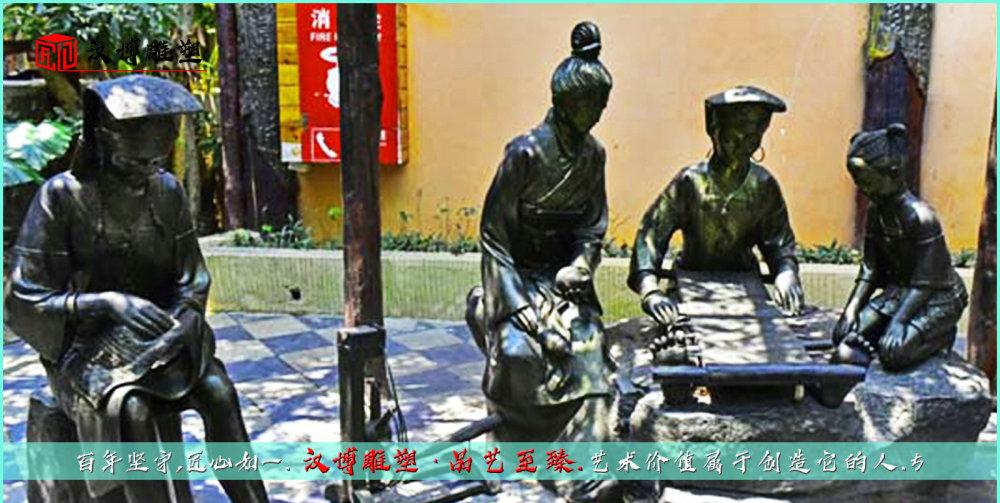The original meaning of textile is taken from the general term of spinning and weaving, but with the continuous development and improvement of the textile knowledge system and discipline system, especially after the production of non-woven textile materials and three-dimensional composite weaving and other technologies, it is not only the traditional hand-spun yarn and weaving, but also the non-woven fabric technology, modern three-dimensional weaving technology, modern electrostatic nano-grid technology and other production of clothing, industrial, decorative textiles. Therefore, modern textile refers to a multi-scale structural processing technology of fibers or fiber aggregates. Ancient Chinese textile and printing and dyeing technology has a very long history, as early as the primitive social period, the ancients in order to adapt to climate changes, has learned to use local materials, the use of natural resources as raw materials for textiles and printing and dyeing, as well as the manufacture of simple hand-made textile tools. Everyday clothing, airbags and curtain carpets are the product of textile and printing and dyeing technology.

Large bronze sculptures, statues of women, historical and cultural sculptures
Bronze sculpture of textile figures, weaving statues, park sculptures
Bronze sculptures of ancient figures, cast bronze statues of figures, sculptures of pedestrian streets
Textile, spinning, weaving, printing and dyeing, printing, textile printing, printing patterns, weaving flowers, weaving drawings. Textile, roughly divided into spinning and weaving two processes, the origin of Chinese textiles is said to have begun by the ancestors of silkworm smelting silk, archaeology found bone needles on the archaeological site of the Paleolithic mountaintop cave people, the earliest known origin of textiles, to the Neolithic Age, the invention of spinning wheels, making silk smelting more convenient, the Western Zhou Dynasty appeared the original textile machine: spinning wheels, wheels, Han Dynasty invented jacquard machines, Ming Dynasty Song Yingxing compiled Tiangong Kaiwu to weave textile technology into it.
China's most famous textile is silk, and the silk trade has led to the development of cultural exchanges and transportation between the East and the West.
Traditional crafts bronze sculpture, textile statues, cultural and artistic sculptures
Memorial stone carving, carving craftsmanship, zodiac sculpture
Bronze sculptures of folk figures, statues of labor, landscape sculptures
"Mozi Ciguo": "Women waste their textiles and are full of literary brilliance, so the people are cold." "Sui Shu Lienu Biography , Zheng Shanguo Mother": "Silk fibre weaving, the affairs of women, from the queen to the wife of the doctor, each has its own system." "Ming Shi Huang Zhi Biography": "Poor, the wife weaves to give the day and night, and reads and talks freely." Qing Wu Chichang's "Guest Window Gossip Lu Qing Sacrifices Public Relics": "For the thickest of profits, it is like textiles." And everyone can do it. Cao Yu et al. "The Fourth Act of the Sword of Courage": "Occasionally there are a few sparks, I think the women are still weaving." ”
Square bronze sculpture, statue of woman, urban sculpture
Textile landscape bronze sculpture, figure statue, sculpture custom manufacturer
Traditional crafts bronze sculpture, spinning statue, ancient street sculpture
Chinese machine textile originated from the Spinning Wheel and Waist Machine of the Neolithic Period five thousand years ago. In the Western Zhou Dynasty, simple reels, spinning wheels and looms with traditional properties appeared one after another, and jacquard machines and diagonal looms were widely used in the Han Dynasty, and Chinese textile machines became more and more perfect after the Tang Dynasty, which greatly promoted the development of the textile industry.
The development of ancient and modern textile processes is designed in response to textile raw materials, so raw materials have an important position in textile technology. In ancient times, the fibers used for textiles in various countries in the world were natural fibers, generally wool, hemp and cotton, such as the fibers used for textiles in the Mediterranean region were only wool and linen; the Indian Peninsula region used cotton before. In addition to using these three fibers, ancient China also made extensive use of long fibers, silk.
Bronze sculptures of labor figures, textile statues, folk landscape sculptures
Bronze sculptures of cherry-picking figures, large statues, outdoor sculptures
Character-themed bronze sculptures, woven statues, cast bronze sculptures
Silk is the finest, longest and slimniest of all natural fibers and can be woven into a variety of complex jacquard fabrics. The extensive use of silk fiber has greatly promoted the progress of ancient Chinese textile technology and textile machine, so that silk weaving production technology has become the most distinctive and representative textile technology in ancient China. Chinese textiles have a long history. Textile products can be summarized into four major varieties: embroidery, silk, clothing and carpets. These four varieties have different production processes and unique styles.